Forging Ahead: Reimagining Steel
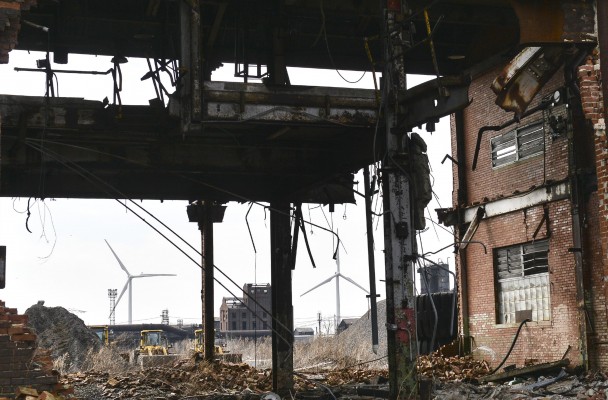
The Lackawwanna Steel Company sat 10 km outside Buffalo but ceased steel production in 1982. Now the brown fields around the former plant boast wind turbines as the area overcomes the loss of steel, one project at a time. John Rennison, Hamilton Spectator
Examining the collapse, and recovery, of America’s steel towns
“Steel’s gone.” That’s what residents of U.S. steel towns will say when asked how things have changed in the last 30 years. It seems like a one-note answer, unless you’re from a steel town too.
If you are, you know inherent in “steel’s gone” is everything else that went with it — jobs, population, buildings, marriages, a sense of civic identity.
You also know it means steel’s not really gone.
* * *
[I]n Hamilton, U.S. Steel may be pulling out, but we still have ArcelorMittal Dofasco (the company declined comment for this series). Background: Stelco never had a chance
In Cleveland, too, ArcelorMittal operates in the centre of the city. Andrew Carnegie’s first mill still operates in a borough of Pittsburgh. Specialty manufacturers work out of Buffalo. Buildings, bridges and cars are still being built. As long as that’s the case, we need steel.
Just not at the level of the ’60s and ’70s, when steel seemed indestructible.
In Hamilton at the time, the industry employed more than 30,000.
Ten per cent of the city worked in steel, which is why the names Stelco and Dofasco were synonymous with Hamilton. They still are. It’s hard to find a Hamiltonian without a direct connection to one of the two mills, even as their employment has dropped off.
There’s no one reason for the decline of steel. Low overseas wages led to cheap steel. Technologies changed the way steel is made and the way it’s used.
In the mid-2000s, Dofasco became ArcelorMittal Dofasco, which now employs 5,400.
Stelco went bankrupt and was bought out by U.S. Steel. Its blast furnace has long since gone cold. Operations are now confined to the south end of the 800-acre site where you’ll find the galvanizing line and Z line coating plant. It only takes 600 employees to keep things running.
In September the company went under creditor protection. It was recently given an extension until Sept. 11. The company is currently working to sell assets, including 813 waterfront acres and 6,600 acres of property at its Nanticoke Works.
The idea of that much vacant steel land is new for Hamilton, but there are plenty of U.S. cities that have been there, done that. All through the rust belt, in New York, Ohio, Pennsylvania, Indiana and Illinois.
They lost their mills in the ’70s and ’80s. Some of them are still sitting ruined and rusting. Others have been razed and rebuilt.
[W]ith 800 empty acres of its own, Hamilton could look south for some ideas.
“I think that Hamilton is very promising,” says Bruce Fisher, founder of the Center for Economic and Policy Studies at Buffalo State college.
Hamilton is a suburb of Toronto, so it has potential for major economic development. As long as Toronto keeps growing, Hamilton stands to gain.
“That’s a big difference from what we’re experiencing all along the rust belt,” he says. “Economic growth is not going to be happening in the United States … that’s just the reality. Population growth isn’t going to be happening. That’s different from what you’re going to be experiencing. Your upside is real and it’s happening.”
[I]n Youngstown, Ohio, tens of thousands were employed by the mills located throughout the Mahoning Valley. In Bethlehem, Pa., Lehigh Valley lives were built around the steel company. It offered jobs and security. It ran the grocery store that fed families. It organized corporate soccer teams and a company brass band. Everything in your life related back to steel. And then, overnight in some cases, it didn’t.
In the intervening years, steel cities have started to move on. They’ve turned to more diversified light manufacturing, health care, education, the arts and technology.
In some places, cities have taken the massive tracts of land occupied by mills and made space for these new industries there.
This has not been an overnight thing.
Steelyards are unique and that makes them more difficult to re-purpose, says Jordan Yin, author of “Urban Planning for Dummies.”
They tend to be located on water, which can be an asset, but it can also be a disadvantage. Mills were built as cities unto themselves. There are docks and rail spurs, but few roads to connect those sites to surrounding communities.
Then there’s environmental contamination, which can scare investors off.
Before there was any regulation to permit brownfield redevelopment, the liabilities for a private developer were laughable so mills stayed standing while communities crumbled around them.
That’s a big part of the challenge for any of the depressed, weak-economy, post-industrial cities like Cleveland or Detroit, says Stephanie Ryberg-Webster, an assistant professor of urban studies at Cleveland State University.
[I]n cities such as Cleveland, she says, there’s so much pristine land, developers are unlikely to take the risk of building on a contaminated site that will be pricey to clean up.
Ryberg-Webster says there needs to be more pressure on people to invest in potentially problematic sites. Regulations can keep people off greenfields, but they can also cause developers walk away from a city altogether. Grants and tax incentives are a more positive way of attracting brownfield development.
Ontario has an incentive program. So does Hamilton.
At the beginning of April, New York State committed $1 billion to extend its brownfield cleanup program. It will help remediate industrial sites over the next 10 years. Across the U.S., the Environmental Protection Agency has provided money to clean up sites including Republic Steel lands in Lorain, Ohio, and a former Westinghouse factory in Mercer, Pa.
But the EPA is a federal institution, and it can be tough to be heard when you have regional concerns.
That was the case for Pittsburgh. Pennsylvania stretches all the way to the Atlantic Coast, covering farm land as it goes. Redeveloping industrial land wasn’t a priority across the state when Pittsburgh was floundering. Neither is fixing up a Buffalo brownfield if you live in Manhattan. And no one in Ottawa or Toronto, Sarnia or Thunder Bay, cares about 800 empty acres in Hamilton. They have their own problems.
It can be a barrier to change, Yin adds, when there’s not shared responsibility for problems like this. At the same time, you can’t sit around and wait for someone else to solve your problems, he insists. It won’t happen.
That’s the mistake Buffalo made, says Dottie Gallagher-Cohen, president and CEO of the Buffalo Niagara Partnership. She says the city expected the mythical “one big thing” to fix everything.
[T]he reality of Buffalo’s current rebirth is that a lot of little things started happening in parallel universes. It was pure luck that it’s all come together at the same time.
“If I were sitting in Hamilton, I would say have a strategy around your strength and be confident in base hits and don’t worry about a home run,” she says. “Just keep hitting is really what’s making a difference here.”
In Pittsburgh, a spirit of collaboration made all the difference, if you ask Bill Flanagan, chief corporate relations officer for the Allegheny Conference on Community Development.
There are 130 different municipalities in Allegheny County, each with its own zoning, regulations and concerns. But when you’re on a sinking ship, you huddle up. Flanagan says crisis bred a willingness to cross lines of politics, geography and organization, one he doesn’t see in other U.S. cities.
[I]n Pittsburgh, it used to be every county for itself in terms of trying to get state dollars. After steel’s collapse though, an initiative called the Southwestern Pennsylvania Growth Alliance brought together commissioners, both Democrat and Republican, from 10 counties. Together they prioritized their pet projects based on how each would affect the counties as a whole.
SEE: Pittsburgh Photo Gallery here
In East Liberty, the poorest part of Pittsburgh, the Urban Redevelopment Authority teamed with local developers and community development corporations to revitalize Centre Avenue and an abandoned Nabisco Factory. Bakery Square, as it’s now called, houses Google offices today.
Yin thinks Hamilton is in an excellent position.
It’s a national port for Canada. There’s still huge shipping in the Great Lakes, in cities such as Milwaukee and Duluth and even Buffalo. As the Spectator reported in March, Hamilton’s port moved more tonnage in 2014 than it has in the last decade. At the time, the Port Authority had 50 companies interested in locating or expanding here.
That potential for growth leads to another advantage, according to Fisher.
“The second thing that you have is that because there’s growth you have the question of how will you govern? The reality is that you’re governed in a manner that suggests you’re going to have career civil servants who study up on this stuff and are held accountable for their decisions long-term. That’s very different than the political focus on the U.S. side,” he says.
There are fewer opportunities in terms of political continuity in the U.S. compared to Canada.
[O]ne place that has capitalized on that political continuity is Braddock, a borough of Pittsburgh that’s still home to the first steel mill built by industrialist-philanthropist Andrew Carnegie. The mill employs roughly 600. When the old-timers retire, there are no new hires.
SEE: Photo gallery of Braddock here
Since the 1920s, Braddock has lost 90 per cent of its population. There are now roughly 2,000 residents.
For the last 12 years though, under Mayor John Fetterman, there has been a mix of short and long-term planning.
The Braddock Youth Project pays teen participants who get involved with urban gardening plots, or sign up for media and design workshops. A community centre was refurbished with assistance from Levi Strauss & Co., which used Braddock as the site for a series of national promotional videos.
An Instagram campaign (#BraddockBeautiful) paints the city in a positive light. A brewhouse opened by students of Carnegie Mellon University brings outsiders into the borough.

Asa Foster and other students of Carnegie Mellon University located their Brew Gentleman Beer Company in Braddock. John Rennison, Hamilton Spectator
It’s a way of diversifying what they do and how they’re seen — as a depressed blue-collar community.
“In this country there was never a concerted effort to protect these kinds of blue-collar jobs,” says Fetterman. “Certainly nothing on the order that there was in 2008 with the financial service jobs where it was like ‘how many dump trucks of money do you need? Here you go, you got it’ and all those jobs were saved as a result. Nobody gave a shit about it when it was steel jobs. They didn’t say ‘what do we need to do? Do we need to add tariffs?’ It was ‘well that’s capitalism, sorry!’”
One thing Pittsburgh did offer the city and its boroughs, including Braddock, was a re-training program.
In the mid-’80s, then-county commissioner Tom Foerster announced that $1 million would help pay for re-training for anyone in the Pittsburgh area who was dislocated by steel industry.
The Community College of Allegheny County re-trained 10,000 steelworkers, from their 20s to their 60s, for jobs in health care and computer technology.
But that’s only a fraction of the roughly 150,000 people who lost steel jobs between 1970 and 1990.
So yeah, there’s lingering bitterness.
There’s also a kind of pride. People in Pittsburgh, Buffalo, Bethlehem cautiously hold up their population losses like medals. This is where we were! Look at us now! They use words such as strong and resilient and character and scrappy. It’s hard to argue. There are areas in full recovery and there are neighbourhoods where people still live on boarded-up blocks, where two-by-fours hold porches in place.
Locals are eager to show off their cities — to point out how they’ve come back and what they still need to do. They want you to see their homes through their eyes, to hear their story rather than infer it.
In his book “The Hard Way on Purpose,” a collection of essays on growing up in Akron, Ohio, a town known for rubber manufacturing, author David Giffels calls the Rust Belt the burden of America.
“ … and I don’t mean that in the sense that the rest of the country has to shoulder us,” he writes. “I mean in the sense that 70 per cent of us who have stayed have endured and tested and defined the burden in a way that might provide insight for a country that, lately, might welcome our lessons. We know the weight. We understand hard times. We’ve been called ‘dying’ but haven’t died. We know a few things.”
The Spectator has set out to learn those lessons. This series will detail not only the collapse of the steel industry in Buffalo, Bethlehem, Pittsburgh, Youngstown and Cleveland, but what each city has done to recover.
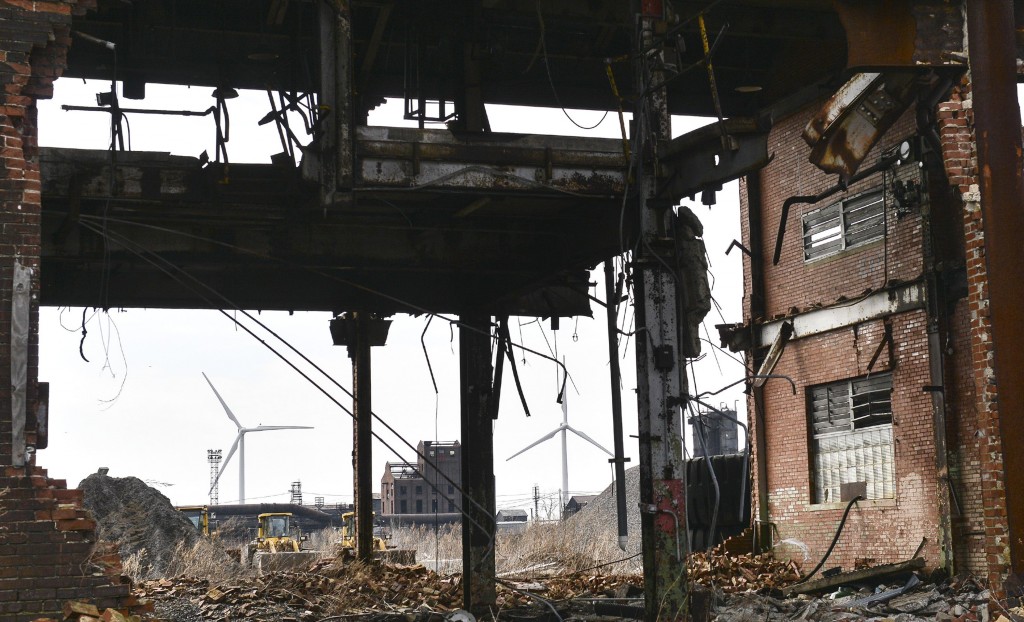
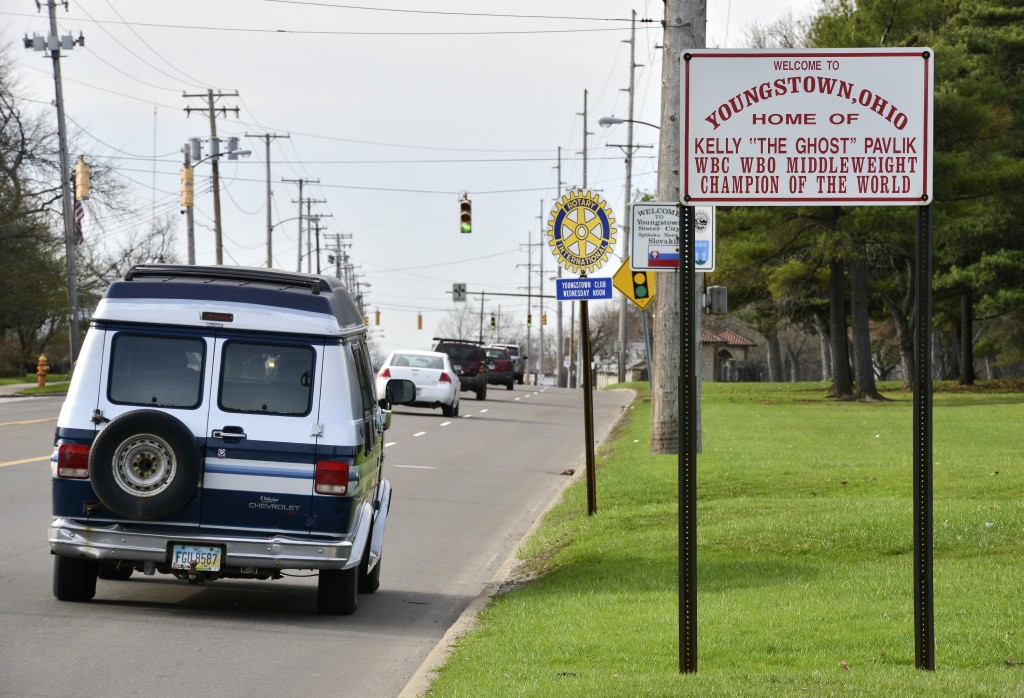
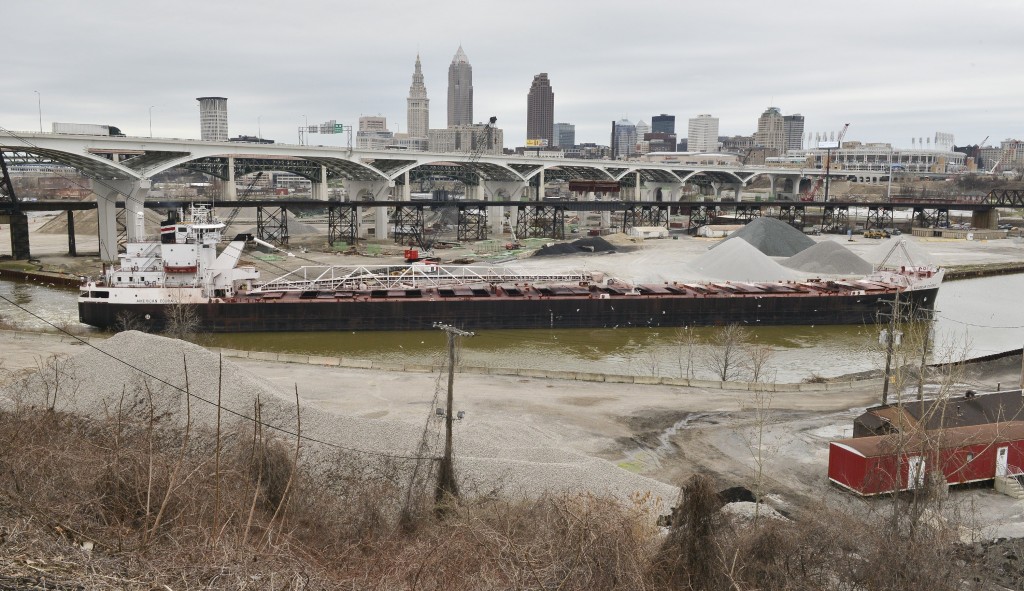
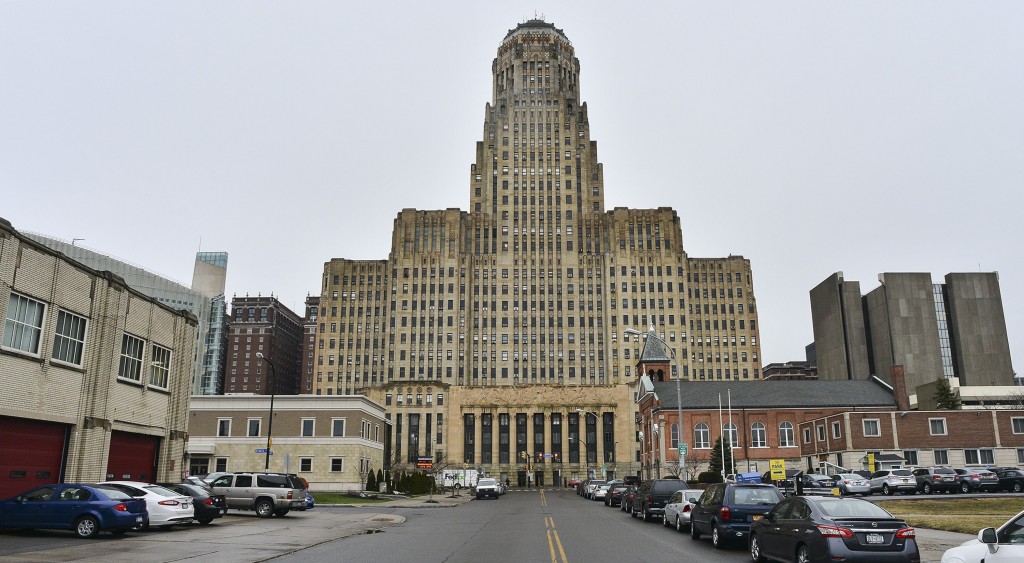

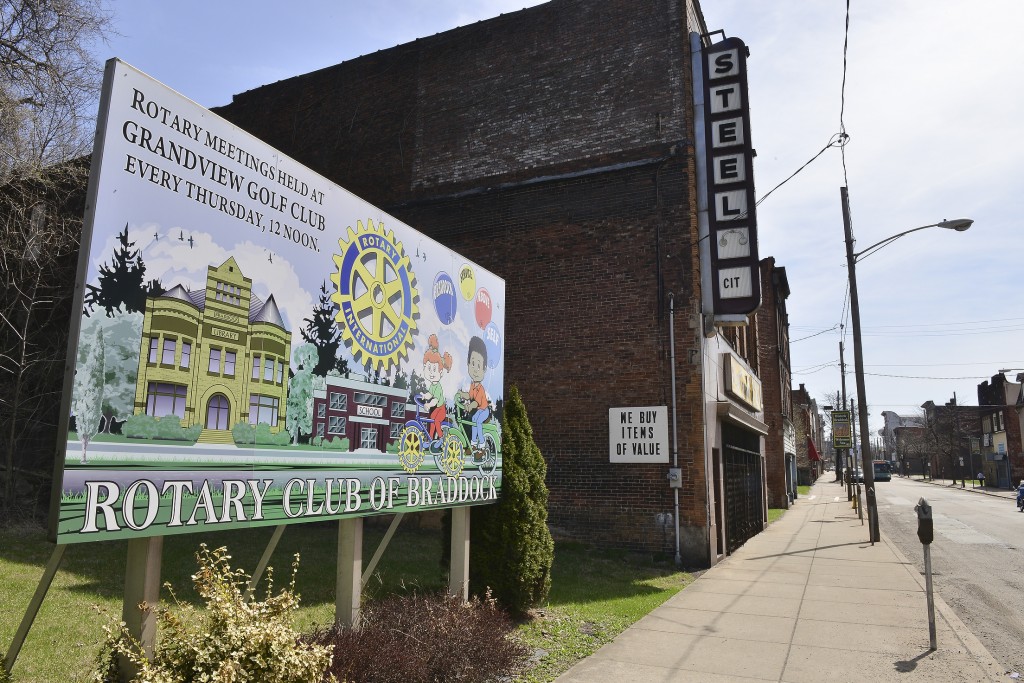

You must be logged in to post a comment.